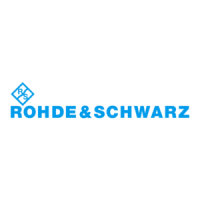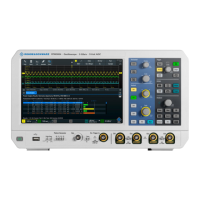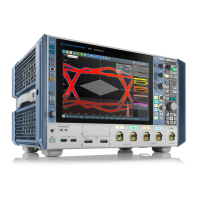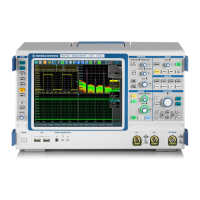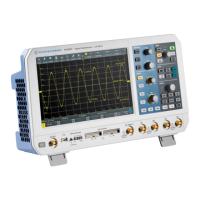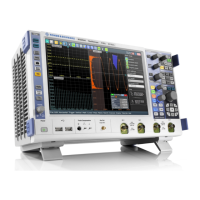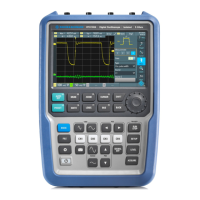Protocol Analysis
R&S
®
RTM20xx
190User Manual 1317.4726.02 ─ 01
ID type ← Identifier Setup ← Identifier
Selects the length of the identifier: 11 bit for CAN base frames, or 29 bits for CAN exten-
ded frames.
Remote command:
TRIGger:A:CAN:ITYPe on page 408
Compare ← Identifier Setup ← Identifier
Sets the comparison condition: If the pattern contains at least one X (don't care), you can
trigger on values equal or not equal to the specified value. If the pattern contains only 0
and 1, you can also trigger on a range greater than or lower than the specified value.
Remote command:
TRIGger:A:CAN:ICONdition on page 409
Bit ← Identifier Setup ← Identifier
Selects the number of the bit in the pattern for bit-by-bit input. For each selected bit, enter
the "State".
State ← Identifier Setup ← Identifier
Toggles the logic state of the selected bit: 0 (low), 1 (high), or X (don't care).
Byte ← Identifier Setup ← Identifier
Selects the byte for input of the pattern. For each selected byte, enter the hexadecimal
value, or set the "State" for each selected "Bit".
Value ← Identifier Setup ← Identifier
Sets the hexadecimal value for the selected byte by turning the navigation knob.
Identifier and data
Sets the trigger to a combination of identifier and data condition. The instrument triggers
at the end of the last byte of the specified data pattern.
The identifier conditions are the same as for the "Identifier" trigger type, see "Identifier"
on page 189.
The first key press enables the trigger type, the second one opens the "Identifier and
data" menu.
Remote command:
TRIGger:A:CAN:TYPE on page 407 (IDDT)
Data Setup ← Identifier and data
Opens a menu to set the data pattern to be triggered on. After setting the "Data length"
and the "Compare" condition, you can enter the value bit-by-bit by setting the state high,
low, or don't care for each single bit. Alternatively, you can enter a hexadecimal value for
each byte.
CAN (Option R&S RTM-K3)
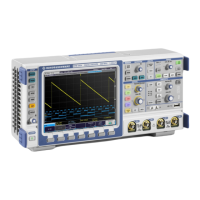
